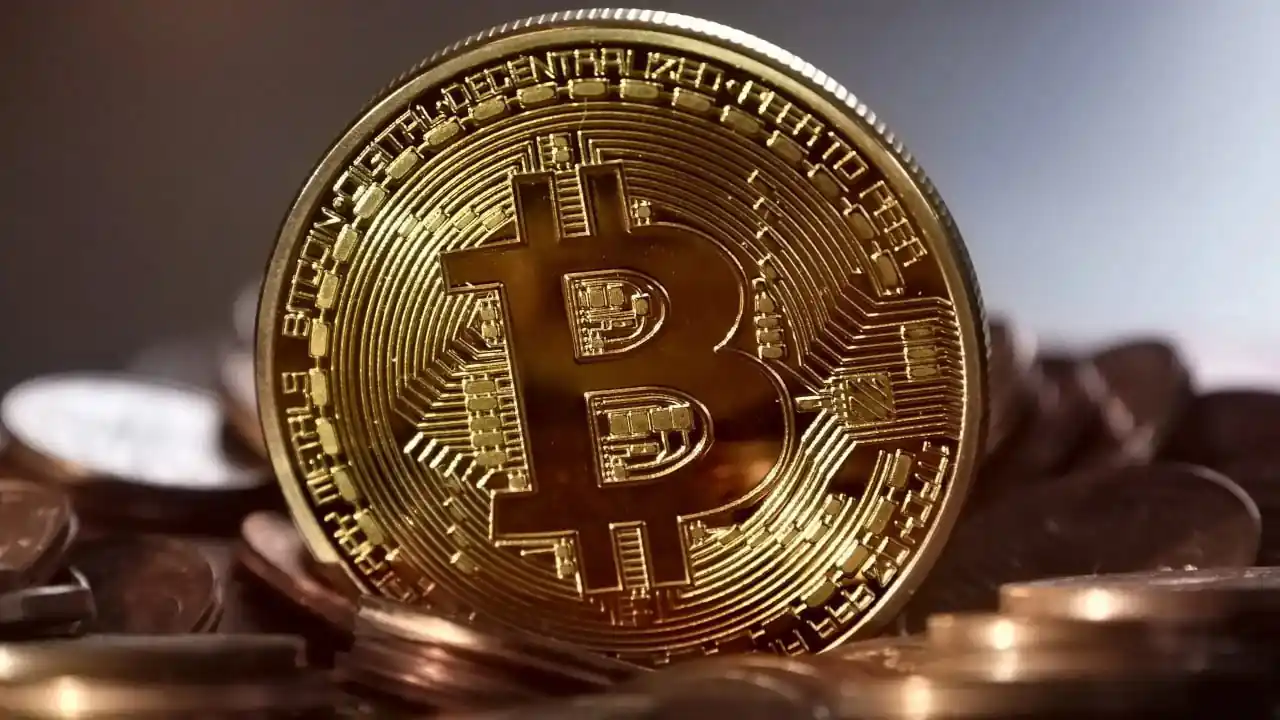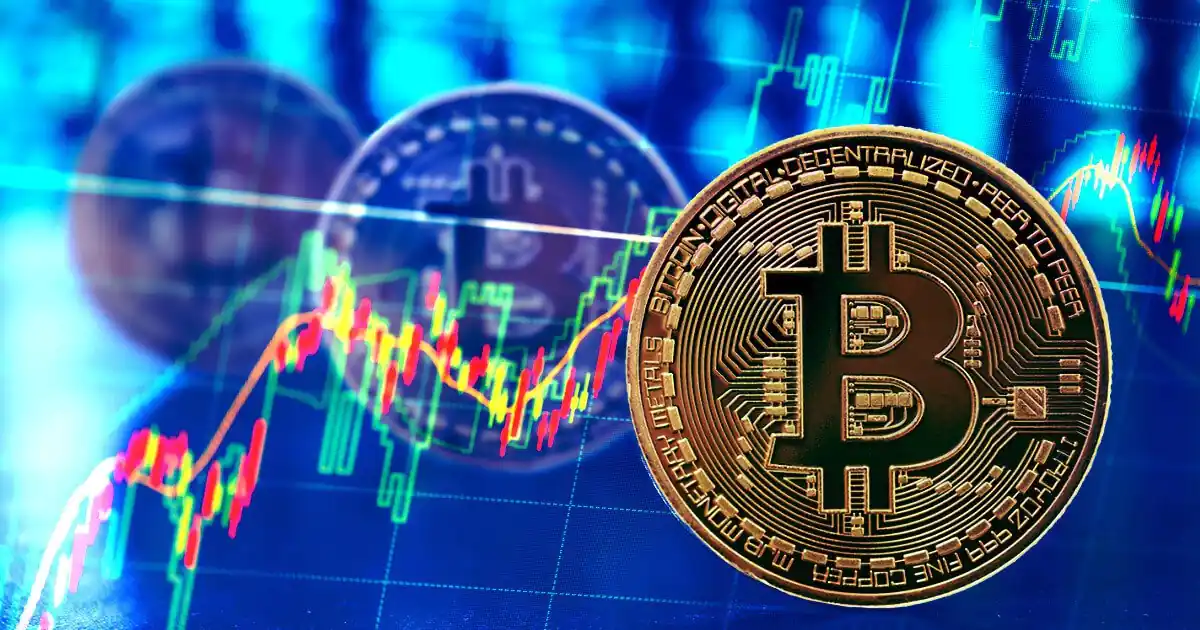PlasBit closely followed the recent Bitcoin halving in May 2020. Many investors are left wondering if will Bitcoin go up after halving. While it's impossible to predict with certainty, historical data suggests that the halving has typically triggered a surge in the price of Bitcoin. The reduced supply of new bitcoins may create a supply shock, driving up demand and potentially leading to an increase in price. However, it's vital to note that Bitcoin is a highly speculative asset whose price is subject to volatile swings. The halving may also lead to a decrease in mining profitability, which could reduce mining activity and decrease network security. Therefore, it's crucial to approach investing in Bitcoin cautiously and be aware of the risks involved.
The Halving Effect: A Look at Bitcoin's Past Performance
The halving effect in Bitcoin refers to reducing the amount at which new coins are minted in the network. This happens approximately every four years and is set up into the Bitcoin protocol to control the supply of Bitcoins and ensure that it remains finite. During a halving event, the reward for mining a block on the Bitcoin network is cut in half, which reduces the number of new coins entering circulation. This event is significant because it affects the incentives for Bitcoin miners and can impact the price of Bitcoin in the market.
● First Bitcoin Halving: November 2012
It's difficult to predict with certainty whether will Bitcoin go up after halving, but history has shown that the previous halving events have resulted in a surge in the price of Bitcoin. The first halving event in Bitcoin's history occurred on November 28, 2012, when the block reward for miners was reduced from 50 BTC to 25 BTC. This was a significant event for the Bitcoin network, marking the first time the supply of new coins was cut in half. The halving was built into the Bitcoin protocol to control the rate at which new coins are created and ensure that the supply of Bitcoins is finite. Leading up to the first halving, the price of Bitcoin had been steadily increasing as more people became aware of the cryptocurrency and its potential as a store of value and medium of exchange. In the months before the halving, the price of Bitcoin increased from around $5 to over $12, a gain of more than 100%. Following the halving, the price of Bitcoin experienced a sharp increase, rising to over $200 within a few months. By the end of 2013, the cost of Bitcoin had surpassed $1,000, an increase of over 9,900% since the halving. Several factors contributed to this price increase. One was the reduced supply of newly mined Bitcoins, which created a supply shock that drove up demand. The halving effectively reduced the rate at which new coins entered circulation, making them scarcer and more valuable. This scarcity and the limited supply of Bitcoins became more apparent to the market after the halving, which added to its perceived value. Another factor contributing to the price increase was individuals' and businesses' growing adoption of Bitcoin. As more people became aware of Bitcoin and its potential as a decentralized, censorship-resistant currency, demand for the cryptocurrency increased. Growing concerns over inflation and economic instability in certain regions further fueled this demand. The first Bitcoin halving event in November 2012 significantly impacted the cryptocurrency's price, leading to a surge in value that lasted for several years. The event demonstrated the importance of supply and demand dynamics in the cryptocurrency market and highlighted the distinctive features of Bitcoin as a decentralized, limited-supply asset.
● Second: July 2016 Halving
The secondevent in July 2016 halving marked another significant milestone in the history of Bitcoin. As mentioned, the block reward for miners was reduced from 25 BTC to 12.5 BTC, which was another significant cut in the amount of newly minted coins that could be obtained through mining. The Bitcoin community widely anticipated the event, marking a crucial point in developing the digital currency. Leading up to the 2016 halving, the price of Bitcoin had been steadily increasing as investors and traders speculated on whether will Bitcoin go up after halving. The expectation was that the reduced supply of newly mined Bitcoins would create a supply shock, driving up demand and increasing prices. In the months prime up to the halving, the cost of Bitcoin saw a substantial increase, rising from around $250 to over $700. After the halving took place, the price of Bitcoin continued to rise, breaking through the $1,000 mark within a few months. This price surge was driven by a combination of factors, including increased media attention and a growing interest from institutional investors. The halving event significantly validated Bitcoin's underlying technology and its potential as a long-term investment asset. One of the key elements that contributed to the price increase after the second halving was the growing recognition of Bitcoin as a legitimate alternative to traditional currencies and investment vehicles. The reduction in the block reward also signaled to investors that Bitcoin's supply was limited, adding to its perceived value. As a result, Bitcoin became an increasingly attractive investment choice for retail and institutional investors. The second halving event marked a significant milestone in the development of Bitcoin and its role in the global financial system. The reduced supply of newly mined Bitcoins and growing interest from investors and traders helped increase Bitcoin's price and cement its position as a viable investment asset.
● Third: Bitcoin Halving 2020
The The Bitcoin halving 2020 is a significant event in Bitcoin's history, but will Bitcoin go up after halving as it has in the past? The bitcoin halving 2020 event marked the third time in Bitcoin's history that the block reward for miners was reduced by half. The cryptocurrency community highly anticipated the event, and many experts and investors were eagerly waiting to see how it would affect the price of Bitcoin. In the months leading to the halving, Bitcoin's price significantly increased, rising from around $7,000 in January 2020 to over $9,500 in May 2020. This price increase was fueled by several factors, including increased interest from institutional investors, a weaker U.S. dollar, and the expectation of reduced supply due to the halving. After the halving occurred, the price of Bitcoin initially remained relatively stable, but it began to climb in the following months. By November 2020, Bitcoin had reached a new all-time high of over $19,000. Various factors, including increased institutional adoption, growing demand from retail investors, and the weakening of the U.S. dollar, drove the price increase. However, the price increase following the 2020 halving was less dramatic than the previous two "halvings." Bitcoin's price rose to over $60,000 in April 2021; it has since experienced significant volatility and is currently trading around $50,000 as of May 2023. This volatility has been attributed to increased regulatory scrutiny, environmental concerns related to Bitcoin mining, and market manipulation. Despite the relatively muted price increase following the 2020 halving, many experts and investors remain optimistic about Bitcoin's long-term potential. The reduced supply of new Bitcoins due to the halving is expected to continue to drive up demand and potentially lead to future price increases. Additionally, mainstream institutions and businesses' increasing adoption of Bitcoin is a positive sign for the cryptocurrency's prospects The Bitcoin halving is a significant event in the cryptocurrency world that profoundly impacts Bitcoin's supply and demand dynamics. With each halving, the number of new Bitcoins generated decreases, making it more scarce and potentially increasing its value. The halving also serves as a reminder of the unique features that make Bitcoin a decentralized and deflationary digital currency. Overall, the halving events continue to be highly anticipated in the Bitcoin community and are closely watched by investors and enthusiasts alike.

The Halving vs. Inflation: How Bitcoin Stands Out in Today's Economic Landscape
As inflation erodes traditional currencies' purchasing power, investors seek alternative assets that can hedge against inflation. Bitcoin's fixed supply and the halving events that further reduce the supply make it an attractive investment option during high inflation. Each halving reduces the supply of new Bitcoins entering the market, making them scarcer and potentially more valuable. This, combined with increased demand for an inflation hedge, raises the question: will Bitcoin go up after halving? The halving may become a catalyst for investors to seek out Bitcoin as an inflation hedge, and the resulting surge in demand could lead to a corresponding increase in price. But first, let's understand the correlation between Bitcoin halving and inflation:
● The Halving: A Built-In Inflation Hedge
Inflation is a concern for many traditional currencies and assets because central banks can print more money, equating to a decrease in the value of the currency or asset. On the other hand, Bitcoin has a finite supply of 21 million coins, with the halving built into the protocol. This means that the rate at which new coins are created is reduced every four years, making Bitcoin a deflationary asset. This built-in inflation hedge has made Bitcoin attractive for those worried about inflation in traditional currencies and assets.
● Inflation: A Double-Edged Sword
While inflation can be a concern for traditional currencies and assets, it can also be beneficial in some cases. For example, low inflation can stimulate economic growth by encouraging people to spend money rather than save it. Additionally, inflation can reduce the actual value of debt, making it easier for people and governments to pay off their debts. However, high inflation can be detrimental to an economy by reducing the purchasing power of consumers, leading to higher prices and a decrease in economic growth.
● Bitcoin as a Store of Value
As Bitcoin's finite supply makes it a deflationary asset, its demand will likely increase over time, especially for those concerned about inflation. This has made it an attractive store of value. It is immune to the inflationary policies of governments and central banks, being decentralized and not controlled by any central authority. Additionally, suppose you're interested in tracking and calculating your crypto profits. In that case, you can use our PlasBit Crypto Profit Calculator. This user-friendly tool allows you to monitor the performance of your portfolio and make informed decisions about cryptocurrency investments. Given the current economic climate, Bitcoin's price will likely increase after the halving event. The inflation rate is at an all-time high. With banks collapsing and economies struggling, institutional and retail investors will probably turn to Bitcoin as an inflation hedge. The reduced supply of new bitcoins following the halving will create a supply shock that drives up demand, potentially leading to an increase in price. However, it's vital to remember that Bitcoin is a highly speculative asset whose price is subject to volatile swings. It's essential to approach investing in Bitcoin cautiously and be aware of the risks involved.
Bitcoin Halving 2024: Will it Trigger the Next Bull Run?
The previous two halving events have shown a clear pattern of a price surge in the months following the halving. However, it's crucial to note that past performance does not guarantee future results. Will Bitcoin go up after halving in 2024? Many factors could impact the price of Bitcoin in the lead-up to and following the 2024 halving. One factor that could impact the price of Bitcoin is the overall adoption and mainstream acceptance of the cryptocurrency. As more individuals, institutions, and governments begin to recognize and use Bitcoin, it could drive up demand and, therefore, the price. Additionally, significant technological and infrastructure developments supporting Bitcoin could impact the price. Another factor to consider is the competition from other cryptocurrencies. While Bitcoin is currently the largest and most well-known cryptocurrency, many others are vying for market share. Any significant advancements or new developments in competing cryptocurrencies could divert attention and investment away from Bitcoin. It's also worth noting that the mining landscape could be quite different during the 2024 halving event. As the difficulty of mining Bitcoin grows and the reward for mining decreases, it could make it more difficult and less profitable for smaller mining operations. This could lead to a consolidation of mining power among more prominent players, which could impact the general security and decentralization of the network. In conclusion, while past performance suggests that the 2024 halving event could trigger the next bull run for Bitcoin, it's essential to consider the many variables and factors that could impact the price and adoption of the cryptocurrency.







